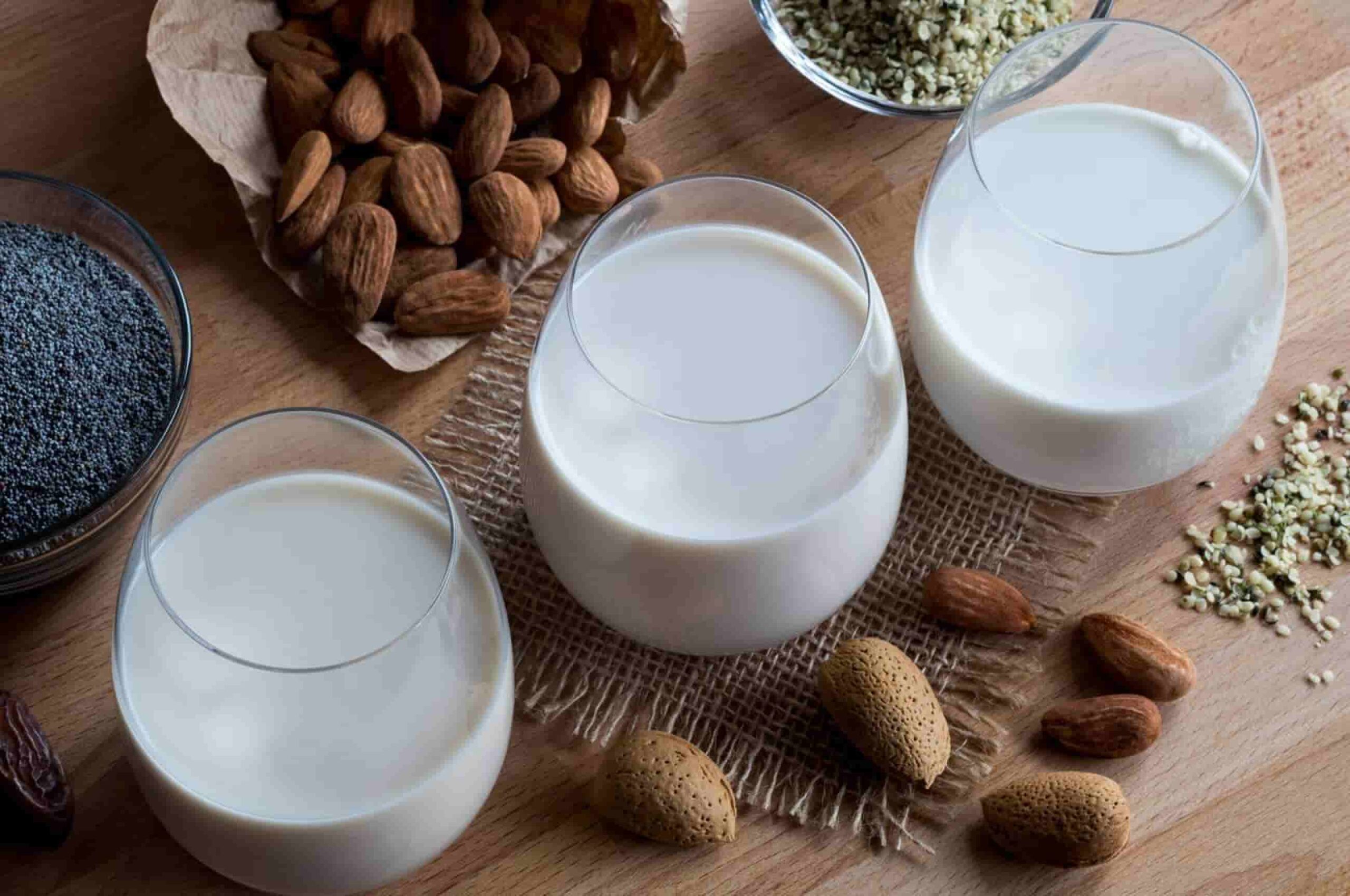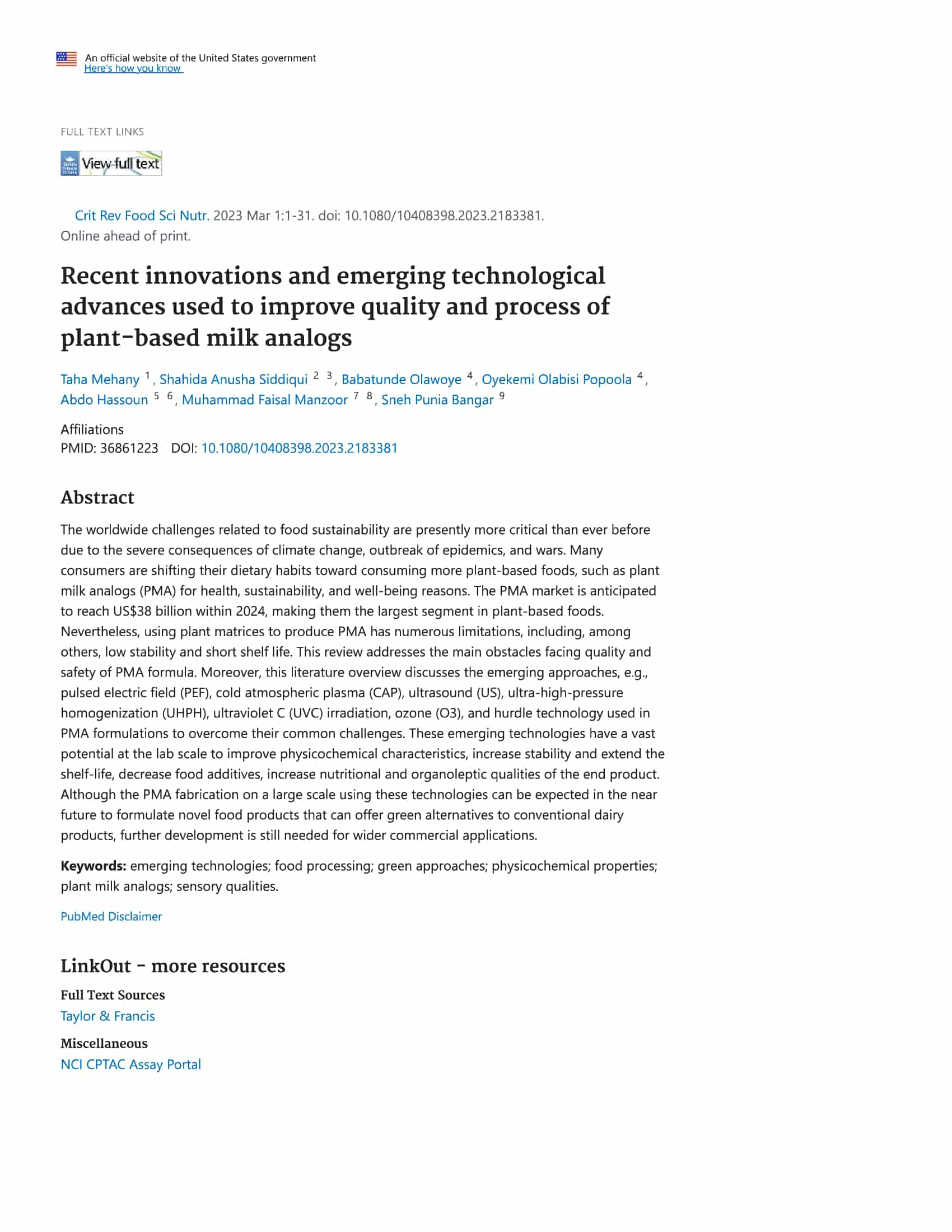In this day and age, the milk aisle is now more than just cow’s milk. When it comes to milk, people today have a lot of options. Apart from dairy milk, there are also some best plant based kinds of milk like almond, soy, and oat milk which are increasingly becoming popular. The emergence of plant-based milk brought forth various options for those who seek alternatives to dairy products. However, amidst numerous alternatives accustomed by different people towards their quest for a substitute beverage; this begs the question- among all these choices available which one is healthiest for you and the environment? We shall take an extensive look at cows, almonds, soybeans, and oats to establish the truth.

In summary, 250 ml of cow’s milk comprises 8g protein, 12g carbohydrates, and 2-8g fats (in the skim, reduced fat, or whole cream). This means that you get 15% of your daily value for proteins, 10% carbs, and 2-15% fat intake from such a glass.
Typically, plant-based milk has fewer carbs than dairy milk. They are higher in “good fats” but lower in fat content generally too.
History of Best plant based milk
Milk made from plants has changed a lot. Before, there was almond milk. But now, there is a new plant milk called Yofiit. The story of plant milk began long ago. People in the Middle East, Africa, and Europe used almond milk in medieval times.

Nonetheless, soy milk is the one that got the ball of plant-based milk alternatives rolling commercially. Although it took off in Asia during the mid-1900s, soy milk did not reach Europe, North America, and the rest of the world until the second half of the 20th century.
But then rice milk swooped in. It sounded good on the outside: rice is ubiquitous and pretty much allergen-free, so what could be wrong? Well, quite a bit actually – no nutrition, loads of carbs/sugar, and zero functionality to boot.
When almond milk began to gain popularity in the early 2000s, things became more intriguing. By 2010-2020 almond milks seem unstoppable as they’ve become synonymous with low calorie (30 cals per glass – because it’s water with 2-3 almonds and some gums). Sure enough, but you know what has no calories? Water. So if you’re after seriously low calories don’t even bother and don’t get us started on the environmental footprint oat milk has.
Oat milk has been around since the 90s but today it reigns supreme because people adore its taste and performance capabilities. Oat milk burst onto the scene about 30 years ago but most iterations lacked nutritional value and were saturated with sugar
Existing plant milks were far from perfect but they were instrumental in exposing millions to dairy-free alternatives. Now, however, Yofiit plant milk has entered the market.

Made with the best ingredient combination for maximum benefits, chickpeas, peas, and flax. 10 grams of protein, omega 3, no gums, no fillers, no processed sugar, yet very tasty and works well in everything.
Comparison of environmental impact between best plant based milk and dairy milk
We will now be examining the nutritional as well as environmental factors that are involved in comparing plant-based beverages to cow’s milk. The food we eat has an impact on our health and the environment. Animal agriculture has been known to contribute significantly to environmental degradation processes therefore there is a need for this study which seeks to find out if these dairy replacements can serve as viable options for people looking to reduce their ecological footprints.

We know that the health of people and environmental issues are interrelated with our food system. GHG emissions of greenhouse gasses are commonly associated with animal-sourced foods hence presenting a significant challenge given their high impact on the planet.

As part of the research into sustainable diets, a study compared a range of plant-based milk – almond, cashew, coconut, hemp, oat, rice, soy – alternately produced using cows’ milk under different farming practices. Two main indexes were used to evaluate the nutritional composition of plant-based milk and animal milk, including the FSI (20) Nutritional Density Indicator and NR Protein Replacement Scores. In the nutrient density test of FSI 20 which indicates how well any given food item can fill nutrient gaps within a country’s typical dietary pattern; it was found that cow’s milk ranked highest while unfortified soy matched fortified soy without fortification thus taking second place before being closely followed by almond which frequently tied with oat but mostly came next after this legume type nut drink whereas rice stood lowest among all examined plant-based beverages.
FSI (Nutrient Density) is calculated by summing weighted nutrients per 100g.
When oting, soy, and almond milk can be used as a substitute for cow milk if they are fortified according to protein quality and nutritional adequacy, all of them were found to have good results with NR Protein Substitution Score. Likewise, different research referring to various environmental aspects was discovered by considering the sustainability of different dietary choices in many environmental ways; therefore, not only did the study concentrate on nutrition but also included plant-based drinks’ effects on the environment compared to those of cows’ milk.
Food scientist explains nutritional gaps in plant-based milk
Firstly, let’s talk about almond milk. This has been around for ages, being mentioned first off in Baghdad cookbooks and later in medieval European ones from the 14th century. It is a neutral-flavored alternative with a slightly thinner consistency than most other plant-based kinds. One thing people don’t know is that it has more alpha-tocopherol or vitamin E than any other nut milks do. That said however there are some serious environmental issues surrounding almonds which are mostly grown in California where they use up loads of limited supplies such as water.
Here is the brief discussion published on YouTube which you should check out,
Traditional Plant Milk Varieties
We will investigate the traditional Plant Milk variations of 2 nations which may cover Horchata (rice milk) in Spain and Mexico and soy milk in East Asia.
The Delicious History of Horchata (rice milk) in Spain – Many people think that horchata was first made in Mexico, but it came from North Africa, especially in what’s now Nigeria and Mali. The “kunu aya” — which dates as far back as 2400 BC — was well-loved among folks living within those areas. However, when the Moors conquered Spain, they brought their refreshing drink with them and gave it to the Spanish people residing in the Iberian Peninsula. This is how the popular “horchata de chufa” (or tiger nut milk) came to be.
Valencia, a city in Spain, embraced the horchata de chufa tradition and became its epicenter. From then on, this city’s name replaced “orxata,” an old Valencian word meaning “nut milk,” and stuck as its official title — “horchata.”
Soy milk in East Asia – Ancient Chinese history boasts of soy milk as a plant-based substitute for typical dairy from cows. The earliest records of soybean farming date back more than 5,000 years ago within this area, where it was found that aside from being used to create tofu and soy sauce among other things, the legume could also produce a creamy drink with a slightly sweet taste commonly known as ‘soy milk’.
Regional Preferences and Trends
Do you want to know about the different types of plant-based milk from all over the world? Imagine a lively Moroccan market where almond milk is a popular drink or a peaceful Japanese tea ceremony with creamy soy milk. Plant milk options span the globe, reflecting diverse cultural preferences and tastes.
Cultural diversity influences global preferences for plant-based milk. Discover the most popular plant-based milks enjoyed globally.
Almond Milk
One of the most popular plant-based milk substitutes and a customer favorite is almond milk. It gained impressive growth in recent years due to its natural, nutty flavor and creamy texture.
Coconut Milk
Plant-based coconut cream is used in a lot of different types of cooking, especially in the tropics. Coconut milk can be used in both sweet and spicy recipes because it has a rich, creamy texture.
Soy Milk
Soy milk, a more traditional dairy alternative, has been a staple in many cultures for centuries. With its high protein content and creamy texture, soy milk is often considered the closest alternative to dairy milk.
Oat Milk
Oat milk has been gaining popularity in recent years for its smooth texture and mild, slightly sweet taste. As a dairy-free replacement that is also good for the environment, it has become a popular choice.
Rice Milk
People who are allergic to nuts prefer rice milk over other types of plant-based milk despite its lower popularity. This is because of the light and sweet taste which many people find less harsh than regular dairy products.<br>
Cashew Milk
Cashew milk offers a creamy consistency and a slightly nutty flavor that enhances both beverages and recipes.
Quinoa Milk
Quinoa milk is a plant milk that is not so common. But people who care about health are liking it more. It has lots of protein and important building blocks called amino acids. When we pick plant milk, we are picking our taste. We also are picking drinks that fit with the foods we grew up with.
Technological Innovations in Plant Milk Production
Climate change and conflicts cause food problems. Many eat plant milk alternatives (PMAs) for health and the environment. The PMA market may reach $38 billion by 2024. But PMAs spoil quickly. What affects PMA quality and safety? This review explores solutions like pulsed electric fields (PEF), cold air pressure (CAP), ultrasound (US), ultra-high pressure (UHPH), UV-C light, ozone (O3), and hurdle technology. These methods enhance shelf life, reduce additives, and improve nutrition. Large-scale adoption could enable dairy alternatives from plants, mimicking dairy flavor. Conducting more research is necessary before widespread use. But these innovations show promise for sustainable food solutions.
To dive deep into it we have a research publications reference for you,

Future Prospects and Challenges
Despite the swift development in the plant-based beverage industry, there are still many difficulties in satisfying the increasing demands and maintaining quality. This is the same case observed in the coffee sector, which shifted from being a commodity to producing specialty items due to the ever-changing market dynamics. The advent of plant-based milk has not been a bed of roses for the dairy industry. Financial hardships have hit the dairy farmers who have been experiencing low prices of milk alongside dwindling profits. Processors, too, have had their share of challenges. For instance; Dean Foods company recorded negative effects resulting from the continued decrease in liquid dairy product consumption over several decades. Although attempts have been made by dairy players, some viewed this trend as an avenue for business growth. In 2017, one such move was made when Danone bought WhiteWave – the owner of popular brands such as Horizon Milk and Silk Pure Almond – for $12.5 billion which has been profitable since then with a more than 30% increase in stock prices.
At Ending
To sum up, plant-based milk becoming more popular instead of usual dairy marks that people become more aware of food and eco-sustainability. Consequently, as this sector is booming, different producers need to keep up with the times facing challenges caused by innovations, regulations, and variable customers’ behavior. Besides, it is still unclear what will happen with milk after everything becomes plant-based. However, dairy companies should adapt themselves to the new market environment by creating something innovative that meets consumers’ needs.







